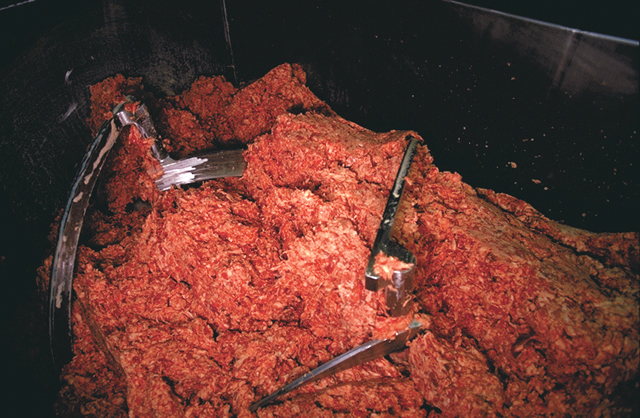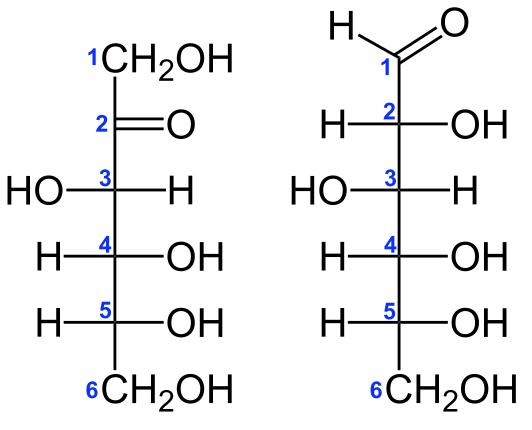 Blame corporate euphemisms and branding for the obfuscation of everyday things. More sinister yet, is the constant re-working of names for our ever increasingly processed foodstuffs. Only last year as several influential health studies pointed towards the detrimental health effects of high fructose corn syrup (HFC) did the food industry act, but not by removing copious amounts of the addictive additive from many processed foods. Rather, the industry attempted to re-brand HFC as “corn sugar”. And, now on to the battle over “soylent pink” also known as “pink slim”.
Blame corporate euphemisms and branding for the obfuscation of everyday things. More sinister yet, is the constant re-working of names for our ever increasingly processed foodstuffs. Only last year as several influential health studies pointed towards the detrimental health effects of high fructose corn syrup (HFC) did the food industry act, but not by removing copious amounts of the addictive additive from many processed foods. Rather, the industry attempted to re-brand HFC as “corn sugar”. And, now on to the battle over “soylent pink” also known as “pink slim”.
[div class=attrib]From Slate:[end-div]
What do you call a mash of beef trimmings that have been chopped and then spun in a centrifuge to remove the fatty bits and gristle? According to the government and to the company that invented the process, you call it lean finely textured beef. But to the natural-food crusaders who would have the stuff removed from the nation’s hamburgers and tacos, the protein-rich product goes by another, more disturbing name: Pink slime.
The story of this activist rebranding—from lean finely textured beef to pink slime—reveals just how much these labels matter. It was the latter phrase that, for example, birthed the great ground-beef scare of 2012. In early March, journalists at both the Daily and at ABC began reporting on a burger panic: Lax rules from the U.S. Department of Agriculture allowed producers to fill their ground-beef packs with a slimy, noxious byproduct—a mush the reporters called unsanitary and without much value as a food. Coverage linked back to a New York Times story from 2009 in which the words pink slime had appeared in public for the first time in a quote from an email written by a USDA microbiologist who was frustrated at a decision to leave the additive off labels for ground meat.
The slimy terror spread in the weeks that followed. Less than a month after ABC’s initial reports, almost a quarter million people had signed a petition to get pink slime out of public school cafeterias. Supermarket chains stopped selling burger meat that contained it—all because of a shift from four matter-of-fact words to two visceral ones.
And now that rebranding has become the basis for a 263-page lawsuit. Last month, Beef Products Inc., the first and principal producer of lean/pink/textured/slimy beef, filed a defamation claim against ABC (along with that microbiologist and a former USDA inspector) in a South Dakota court. The company says the network carried out a malicious and dishonest campaign to discredit its ground-beef additive and that this work had grievous consequences. When ABC began its coverage, Beef Products Inc. was selling 5 million pounds of slime/beef/whatever every week. Then three of its four plants were forced to close, and production dropped to 1.6 million pounds. A weekly profit of $2.3 million had turned into a $583,000 weekly loss.
At Reuters, Steven Brill argued that the suit has merit. I won’t try to comment on its legal viability, but the details of the claim do provide some useful background about how we name our processed foods, in both industry and the media. It turns out the paste now known within the business as lean finely textured beef descends from an older, less purified version of the same. Producers have long tried to salvage the trimmings from a cattle carcass by cleaning off the fat and the bacteria that often congregate on these leftover parts. At best they could achieve a not-so-lean class of meat called partially defatted chopped beef, which USDA deemed too low in quality to be a part of hamburger or ground meat.
By the late 1980s, though, Eldon Roth of Beef Products Inc. had worked out a way to make those trimmings a bit more wholesome. He’d found a way, using centrifuges, to separate the fat more fully. In 1991, USDA approved his product as fat reduced beef and signed off on its use in hamburgers. JoAnn Smith, a government official and former president of the National Cattlemen’s Association, signed off on this “euphemistic designation,” writes Marion Nestle in Food Politics. (Beef Products, Inc. maintains that this decision “was not motivated by any official’s so-called ‘links to the beef industry.’ “) So 20 years ago, the trimmings had already been reformulated and rebranded once.
But the government still said that fat reduced beef could not be used in packages marked “ground beef.” (The government distinction between hamburger and ground beef is that the former can contain added fat, while the latter can’t.) So Beef Products Inc. pressed its case, and in 1993 it convinced the USDA to approve the mash for wider use, with a new and better name: lean finely textured beef. A few years later, Roth started killing the microbes on his trimmings with ammonia gas and got approval to do that, too. With government permission, the company went on to sell several billion pounds of the stuff in the next two decades.
In the meantime, other meat processors started making something similar but using slightly different names. AFA Foods (which filed for bankruptcy in April after the recent ground-beef scandal broke), has referred to its products as boneless lean beef trimmings, a more generic term. Cargill, which decontaminates its meat with citric acid in place of ammonia gas, calls its mash of trimmings finely textured beef.
[div class=attrib]Read the entire article following the jump.[end-div]
[div class=attrib]Image: Industrial ground beef. Courtesy of Wikipedia.[end-div]


 [div class=attrib]From Anthropology in Practice:[end-div]
[div class=attrib]From Anthropology in Practice:[end-div]